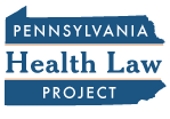Amid Rising Improper Medicaid Payments, CMS Offers Help
With improper Medicaid payments nearly twice as high as they were just a few years ago, the Centers for Medicare & Medicaid Services is reaching out to state Medicaid programs with suggestions for how to reduce those improper payments.
The problem?
 According to CMS,
According to CMS,
States are facing greater challenges keeping pace with stricter enrollment requirements, tracking providers who have been excluded from other States’ or Federal health care programs, and generally adapting to changing regulations for qualifications of certain provider types.
In a new e-alert, CMS identifies factors that contribute to improper payments – things like ineligible and excluded providers, provider identity theft, medical services not provided, phantom or invalid provider addresses and ID numbers, and more. For each factor it identifies in the new e-alert CMS suggests solutions and directs interested parties to resources that can help them with those solutions.
To learn more about the extent of improper Medicaid payments and their recent increase, what has contributed to that rise, and possible solutions go here to see the CMS e-alert “Medicaid Improper Payments.”

 The state Health Department has created a web site for the program that includes FAQs about how the PDMP works for those who prescribe and dispense controlled substances. Visit that web site
The state Health Department has created a web site for the program that includes FAQs about how the PDMP works for those who prescribe and dispense controlled substances. Visit that web site  The centers are funded in part by state behavioral health funds, in part by state Medicaid funds, and in part by federal Medicaid matching funds.
The centers are funded in part by state behavioral health funds, in part by state Medicaid funds, and in part by federal Medicaid matching funds. The report, prepared by the organization Catalyst for Payment Reform, seeks to
The report, prepared by the organization Catalyst for Payment Reform, seeks to

 Included in this edition are stories about the unexpected rebidding of HealthChoices contracts for Medicaid-covered physical health services; passage of the state’s fiscal year 2017 budget; access for Medicaid beneficiaries to drugs to treat hepatitis C; the creation by the state legislature of a task force to explore barriers to access to treatment for substance abuse; and more.
Included in this edition are stories about the unexpected rebidding of HealthChoices contracts for Medicaid-covered physical health services; passage of the state’s fiscal year 2017 budget; access for Medicaid beneficiaries to drugs to treat hepatitis C; the creation by the state legislature of a task force to explore barriers to access to treatment for substance abuse; and more.